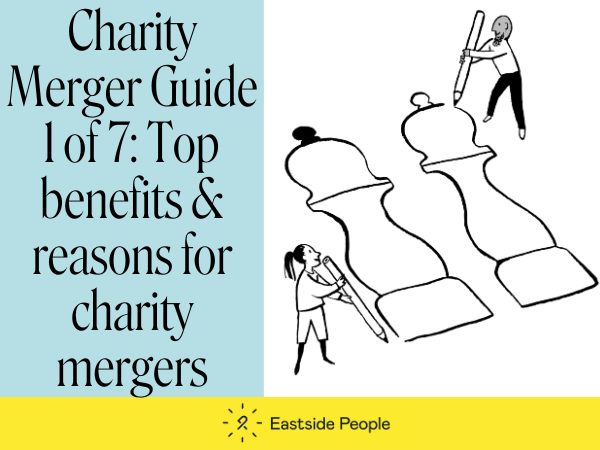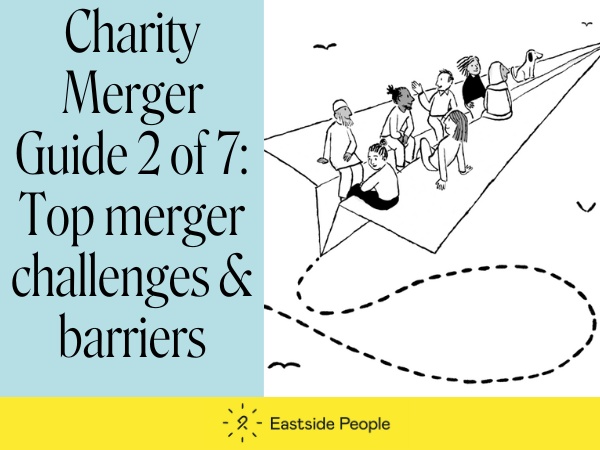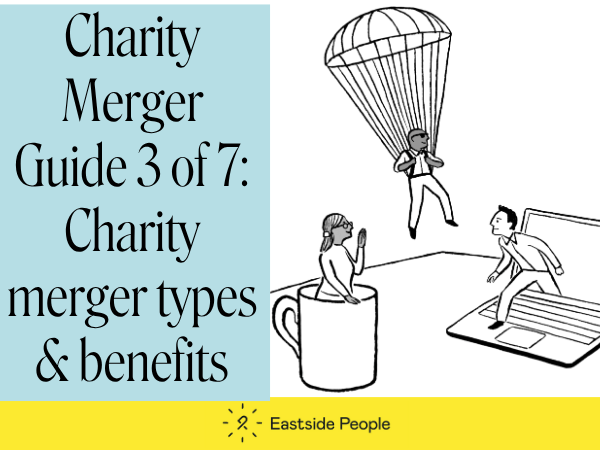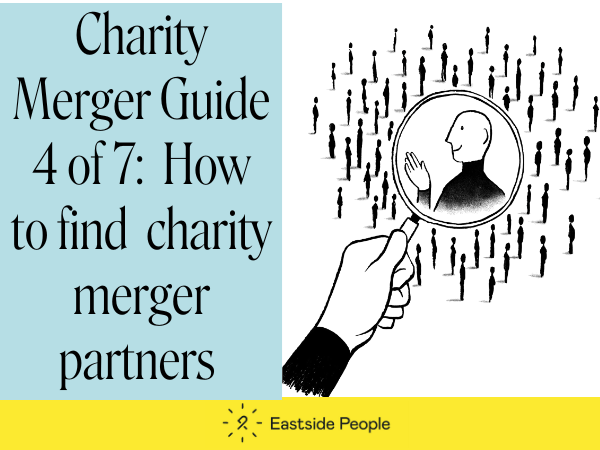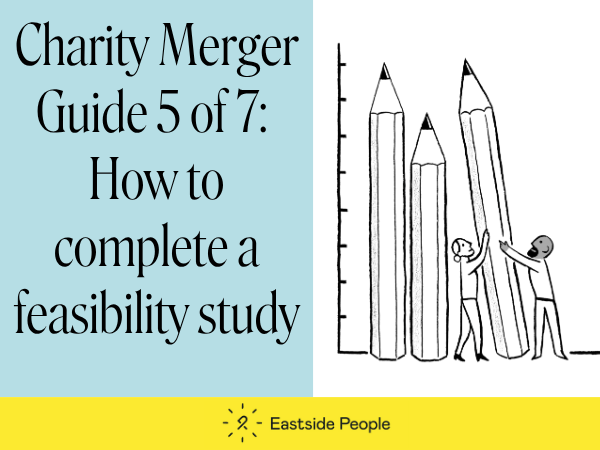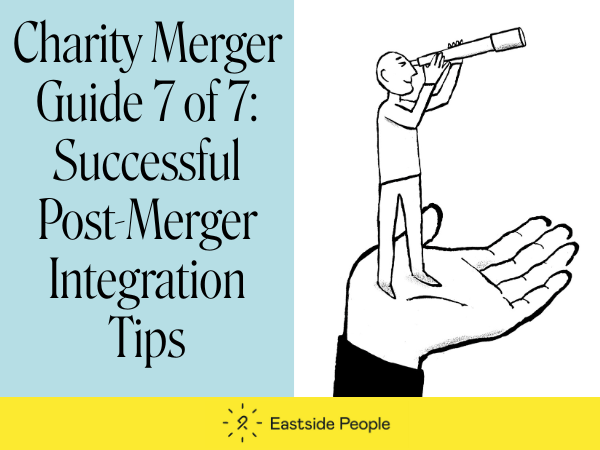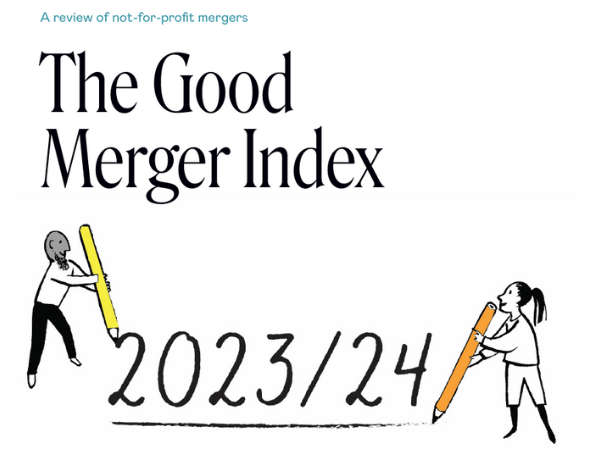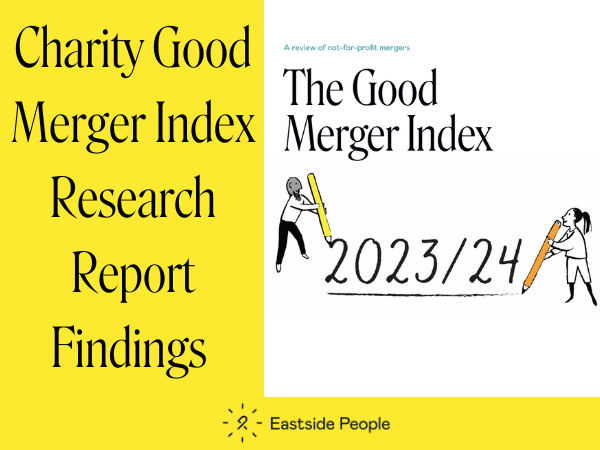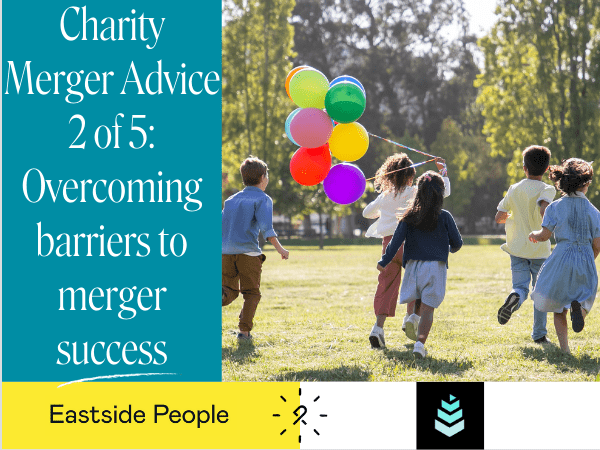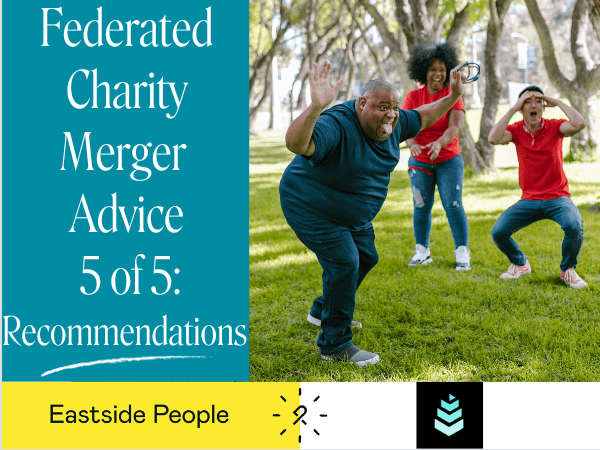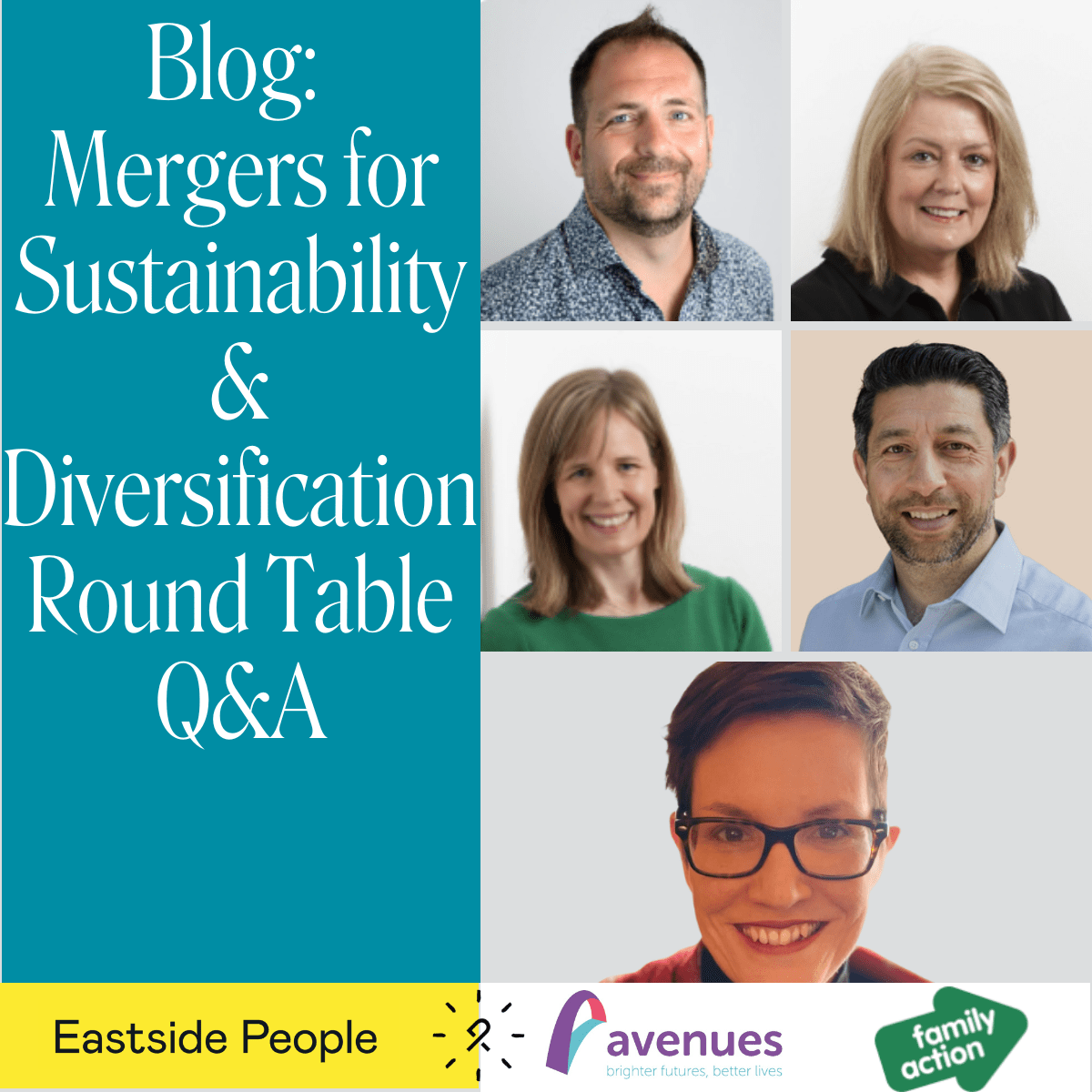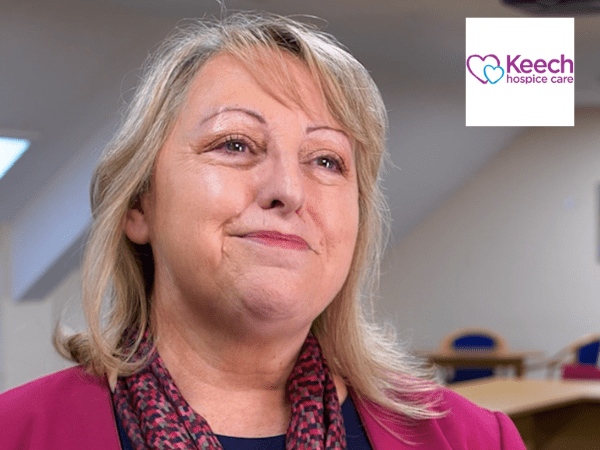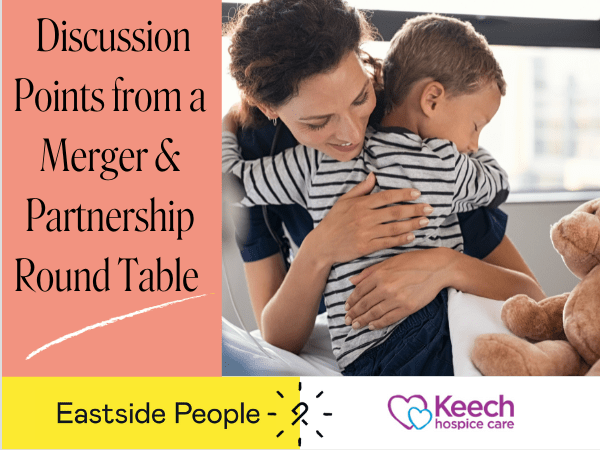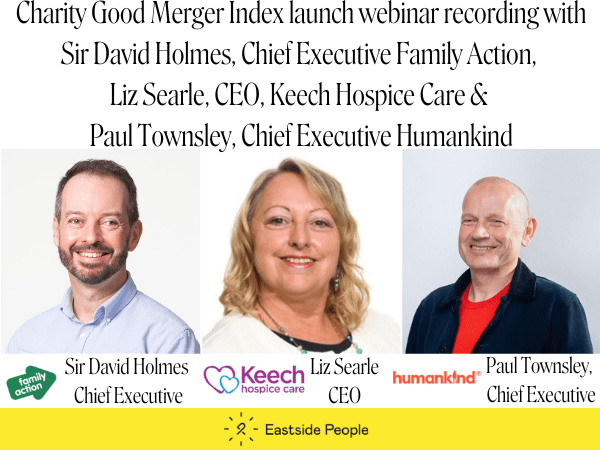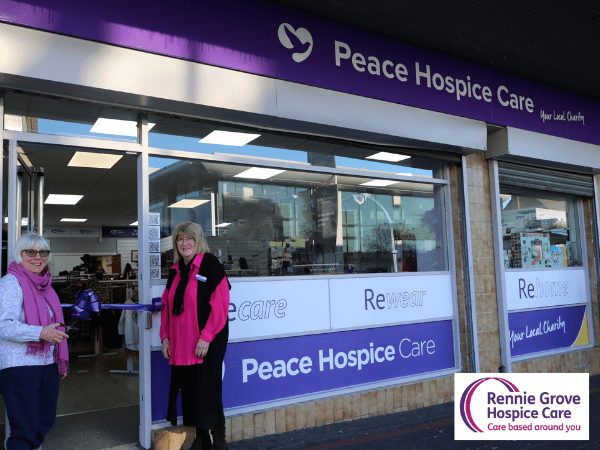Successful mergers can have a transformative effect changing the scale, reach and prospects of an organisation and creating a better deal for the people that rely on a charity’s services. At Eastside People, we have been supporting charities and other not-for-profit organisations through partnerships and mergers for over a decade. In that time, we have witnessed organisations embark on partnerships and mergers for a myriad of reasons.
The Good Merger Guide was created by Eastside People to:
- Highlight the main questions to consider before embarking on a merger
- Provide step by step advice on the three stages of managing a merger.
We have taken some of the best advice and guidance from the Good Merger Guide focusing particularly on the practical and technical aspects of mergers. The 7 articles that make up the set are a must read for anyone in a charitable organisation considering merger as a possible option and wanting to know more about what is involved. This is article 6 of 7.
The key areas of charity merger due diligence: The Process of Due Diligence
Once the charities involved have (hopefully) done their feasibility studies and made an agreement in principle to proceed with the merger, the due diligence process should begin.
The purpose of due diligence is to investigate the legal, financial, governance, operational and reputational aspects of your organisation’s potential merger partner(s).
It is the final go/no-go point before the trustees of each organisation formally approve the merger, and its purpose is to uncover any issues or reasons not to proceed. It is therefore an absolutely vital stage in the merger process.
The following checklist outlines the key areas to consider in any due diligence process.
1. Governance:
Assess the charity’s governance structure, including the board’s composition, roles, and responsibilities.
2. Risk Management:
Identify and evaluate potential risks, including operational, financial, and reputational risks.
3. Financial Health:
Review financial aspects such as sources of income, budgets, expenditure commitments, cash flow, reserves, investments, forecasts, and fundraising commitments.
4. Other Liabilities and Responsibilities:
Examine regulatory issues, including data protection and other compliance requirements.
5. Employment and Pensions:
Evaluate employment contracts, pension schemes, and related obligations.
6. Contractual Obligations and Disputes:
Review existing contracts and any ongoing or potential disputes.
7. IP, IT, and Web Systems:
Assess the charity’s intellectual property, IT infrastructure, and web systems.
8. Assets and Property:
Evaluate the charity’s physical and intangible assets, including property holdings.
9. Health and Safety Records:
Review health and safety policies, records, and compliance.
These areas are all contained within the Charity Commission’s published guidance to support trustees through the due diligence process.
Conducting Proportionate Due Diligence
The checklist above is just a starting point. Due diligence is not a one size fits all process, and in almost all cases, it will be necessary to consider additional areas of focus relevant to the specifics of the organisations involved.
At the same time, it is important not to lose sight of its overall purpose. Taking a proportionate approach to the process will ensure that you dedicate an appropriate amount of time and resource to the process, both for your organisation, and for the type of merger you are working towards.
When done properly, due diligence should:
- Highlight and Assess Risks: Identify and evaluate risks associated with the operations of the other party/parties to the merger
- Provide Independent Confirmation: Verify that the other party’s (or parties’) situation is as described
- Identify ‘Red Line’ Issues: Assist in identifying critical issues that may influence trustees’ decision to agree to the merger
- Moderate Internal Due Diligence: It is common for charities to involve solicitors in this process. Organisations often also involve financial and charity sector advisors, to complement any due diligence undertaken in-house and ensure the process is as robust as possible. At the very least, we do recommend that you have an initial conversation with a solicitor, so that you can identify any areas where you may need legal advice.
The level of due diligence will differ in every transaction. For example, the level of due diligence required for a merger between two large, national charities, each with many hundreds of employees, multiple services and complex infrastructure, is likely to be considerably more detailed and time consuming than it is for smaller organisations, with much more limited staff, services and finances.
Similarly, each organisation’s role should also influence the due diligence process. A large organisation taking over a smaller will usually want to spend more time and resource on understanding the legal, financial and operational risk they will be taking on through the takeover. By contrast, the smaller organisation should be keen to identify the robustness of the larger party’s commitment to being a ‘safe harbour’ including vision, values, culture, quality of services, TUPE and other employee related concerns, and previous handling of subsidiary or partnership relationships.
In all cases, we do recommend that organisations follow a structured process that takes account of all the areas emphasised by the Charity Commission. Ultimately, the charity’s trustees should receive a comprehensive due diligence report, which contains all the information they need in order to decide whether to proceed with the merger.
At Eastside People, we are experts in supporting organisations through the due diligence process so please do get in touch if you’d like to discuss how we can support you.
Once the due diligence report is complete, and (if) the trustees do decide to proceed, then we recommend that you carefully plan the implementation of the merger which you can read about in article 7 of this series.
Next Steps:
We feel that the sooner you start thinking about merger and partnership the greater the chance of success.
We are here to help you wherever you are in the merger journey. Contact us for a free, completely confidential 30-minute advice session with one of our merger experts to discuss how to take the next steps.
Find out more about our charity and not-for-profit merger and partnership consultancy services.
While the Good Merger Guide is available for download, as this was originally created in 2014 it contains older case studies and references. Please refer to the latest Good Merger Index and our website merger topics section for our latest case studies, blogs, insights and other merger-related content.
Read the other articles in our ‘how-to’ charity merger series.



